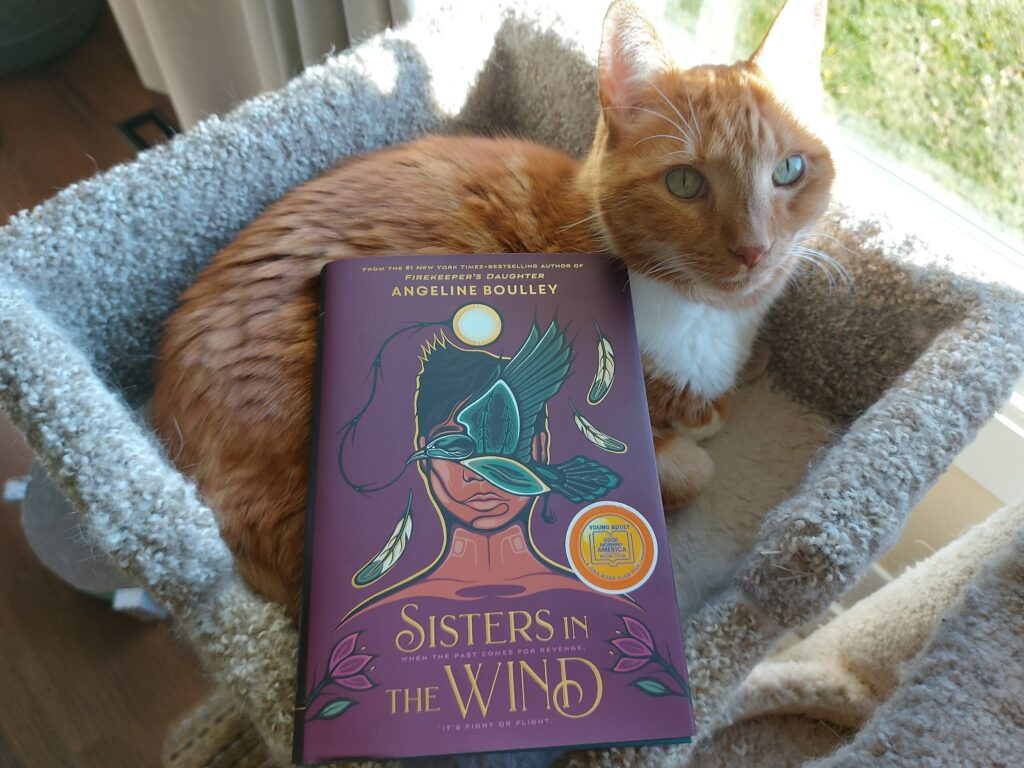Sisters in the Wind by Angeline Boulley

Sisters in the Wind is Angeline Boulley’s third novel and has the same setting and some of the same characters as her first two novels, Firekeeper’s Daughter and Warrior Girl Unearthed. Although not as good as the other two novels, I initially found Sisters in the Wind to be an interesting story. But now that I have had some time to reflect on it, I have realized that I do not like this novel very much.
Sisters in the Wind begins with an explosion at the restaurant where the novel’s protagonist, a young woman named Lucy Smith, works. When Lucy wakes up in the hospital, with a concussion and a broken leg, she is greeted by Daunis Fontaine (the protagonist from Firekeeper’s Daughter) and Jamie Jameson (another character from Firekeeper’s Daughter), who tell Lucy that not only is she Ojibwe, but she is also the half-sister of Daunis’s best friend.
Daunis and Jamie help Lucy while her broken leg slowly heals with the hope that Lucy will be willing to meet her birth mother and become part of their Ojibwe community, but Lucy has other plans. She knows that she was the target of the explosion at the restaurant and that people from her past are hot on her heels, so she plans on running away when her leg is healed enough.
The person or persons who are after Lucy is eventually revealed through flashbacks of Lucy’s life before the explosion. Lucy was raised by her white father who told her that her mother was Italian. After her father dies of cancer, and before she ends up in the foster system, Lucy’s stepmother reveals to her that her mother was Indigenous. One of the foster families that Lucy lives with for awhile is a religious white family that seems okay, until Lucy discovers the pervert son is molesting his younger sister. Lucy then ends up in a group home with several other teenagers on a farm that is run by a white couple who seem nice and supportive, until Lucy learns something devious is going on at the farm.
Sisters in the Wind examines the foster system mainly in relation to Indigenous children who end up in it, and the Indian Child Welfare Act in the US, which mandates that efforts should be made to place Indigenous children in the foster system with their own families or communities. Except white social workers, as the novel indicates, find the Act to be a burden because of the extra work it creates in a system that is already overworked and underfunded.
The novel also focuses on teenage pregnancy, but in my opinion, it takes a simplistic and overly positive view of teenage pregnancy. All the pregnant teenagers in the novel seem happy with being pregnant and they are happy to give up their babies for adoption. The novel doesn’t really touch on the flip side of teenage pregnancy: not every pregnant teenager has supportive adults to help them through their pregnancies; not every mother finds it easy to hand her baby over for adoption; not all single mothers have the support they need to raise their children, whether it be a community of caregivers or financial support. The novel does not even discuss safe sexual practices, and Lucy does not even think about protection before having sex. This is concerning in a book written for young adults.
In addition, I do not like how Boulley decided to end Sisters in the Wind. It was unexpected and unnecessary and left me feeling somewhat depressed. Sisters in the Wind has put me off from wanting to read any further novels written by Boulley, which is a shame because I think Firekeeper’s Daughter and Warrior Girl Unearthed are both really good novels.